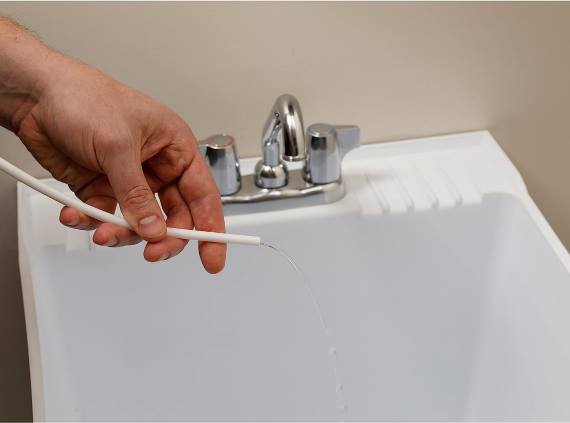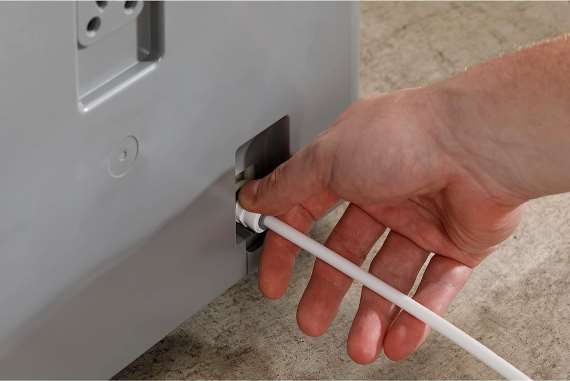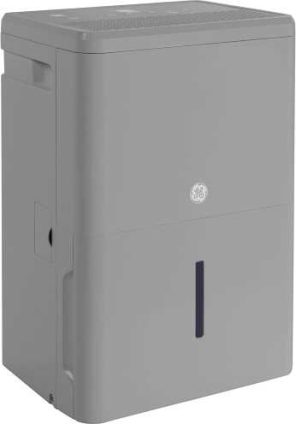How Do You Hook Up a Dehumidifier to Drain Water Continuously?
Living in high-humidity places like Florida, Texas, and Seattle can be a challenge when it comes to controlling moisture levels inside your home.
But not to fret, because a dehumidifier is an excellent solution to combat excessive humidity. For the basement, the unit that you get requires draining to function effectively.
So how will you drain the dehumidifier? Will you keep removing the dehumidifier bucket to pour out the water?
That can be very tiring. That is why you need a continuous-drain dehumidifier. Such a unit is best for removing the dampness caused by flooding.
But first…
What is a continuous-drain dehumidifier?
A continuous drain unit, also known as a condensate pump dehumidifier, is designed to remove excess moisture from the air and dispose of it directly outside.
They are different from the traditional dehumidifiers that require manual emptying of the water collection bucket.
By design, the continuous drain dehumidifiers have an integrated pump. The pump pushes the collected water through a hose for hassle-free drainage.
The good thing is that a dehumidifier with a pump and drain hose can pump the water vertically. If you are using the dehumidifier to lower the humidity in the basement, the pump makes it easy to dump the water outside.
This type of dehumidifier is different from the basement dehumidifier with drain hose. The one with the drain hose can only dump the water via gravity. It cannot dispose of the water outside at a vertical height.
Buying a continuous drain is just the beginning. You need to know how to connect it, use it, and maintain it properly.
How do you hook up a dehumidifier to the drain? 3 ways
Many of the big portable dehumidifiers for mold come with drain hose attachments and accessories. If yours has such, you must set them up. Usually, the unit will drain water in one of the following three ways:
1. Gravity Drainage
Many dehumidifiers come equipped with a gravity drainage option, allowing you to connect a hose to the unit and direct the water flow downward. To set up gravity drainage, follow these steps:
- Read the user manual that comes with the dehumidifier
- Find the drainage port on your dehumidifier, usually located at the back or the side
- Attach one end of a standard garden hose to the drainage port
- Lead the other end of the hose to a nearby window, sink, or floor drain located lower than the dehumidifier
- Ensure the hose is securely connected to both the dehumidifier and the drainage outlet to prevent leaks
- Test the setup by running the dehumidifier and verifying that water is being discharged through the hose
For this process to work, you will have to place the dehumidifier high up, since the water has to flow using gravity.
2. External condensate pump
If your dehumidifier does not have a built-in pump, you can use an external condensate pump to facilitate drainage. This method allows you to drain the dehumidifier at a higher point or over a longer distance.
Here is the simple process for setting it up:
- Find the drainage port on the dehumidifier
- Connect the hose that came with the unit to the drainage port
- Attach the other end of the hose to the condensate pump’s input
- Place the pump in a suitable location, higher than the dehumidifier
- Connect the output of the pump to a hose. This hose leads outside or to a suitable drainage point
- Confirm that all connections are secure and test the setup by running the dehumidifier
3. Floor Drain Installation
If you have a floor drain available nearby, such as one in the bathroom, you can direct the drain hose of your dehumidifier into it. This method is convenient, especially as it eliminates the need for a hose or a pump.
Follow the steps below to drain your dehumidifier into a floor drain:
- Place the dehumidifier near the floor drain
- Remove the dehumidifier bucket
- Find the drain port on the dehumidifier and connect the 6-foot hose that came with the unit
- Put the other end of the hose into the floor drain
- Ensure the hose is positioned correctly to prevent spills onto the floor
- Verify the dehumidifier is functioning correctly, draining directly into the floor drain
Do you have to drain a dehumidifier?

The dehumidifier stops collecting water from the air as soon as the bucket fills up. Therefore, you must drain it to keep it working, especially if you live in a humid place.
If there has been flooding in your basement, you need to keep the dehumidifier in the basement running all the time. Thankfully, many of these units come with built-in humidistats.
Therefore, it switches off as soon as the right humidity level is attained or when the bucket is full. To keep the unit working and lowering humidity, you need to drain water outside.
There are a few ways to do this:
Emptying the dehumidifier bucket manually
It is possible to manually empty the water collection tank of a dehumidifier when it fills up. However, it is inconvenient, especially in high-humidity areas like Seattle because the tank fills up quickly.
It is highly recommended to set up a drainage system for your dehumidifier, ensuring continuous operation without the need for constant monitoring and maintenance.
Using a drain hose and a condensate pump
This is the best method to drain the water that the dehumidifier collects. Attach the hose pipe and direct it to the floor drain, the sink, or outside the window so that it can flow via gravity.
You can also attach a hose to the dehumidifier and then attach it to a condensate pump. Connect a hose to the condensate pump to pump water vertically or over a long distance.
Will a dehumidifier drain without a pump?
The answer to this question depends on a few things. First, the dehumidifier is going to drain water via gravity if it does not have a built-in pump.
Secondly, if the dehumidifier is equipped with a built-in pump, it can drain water continuously without the need for an additional pump.
In the above two cases, the dehumidifiers use the force of gravity to drain the collected water through a hose connected to a suitable outlet.
For the unit with a pump, it pumps the water outside over a long distance. But if your dehumidifier lacks these features, you can use an external condensate pump.
Can you drain a dehumidifier into a floor drain?
This is very possible if you have a floor drain. Try connecting a hose from the dehumidifier’s drainage port to the floor drain.
Just make sure the unit is elevated from the floor by a few feet. You can then fix a hose pipe to the spigot that comes installed just for that.
You can then direct the hose pipe to the floor drain. If there isn’t one, you can direct it to the sink and leave the humidifier on.
Instead of having the dehumidifier going off all the time when the bucket is full, just get one with a drain hose attachment.
That way, it will keep running, switching off when the right humidity level is achieved and switching back on when needed.
Conclusion
Whatever you do, you must keep the humidity level at 30 to 50 percent. Too high humidity is bad for electronics, books, paintings, furniture, and basically everything else.
The worst-case scenario is the growth of black mold and other allergens. If you leave your family exposed to the fungus for too long, they will experience mold toxicity symptoms.
But all this is avoidable if you can invest in a high-quality dehumidifier. By properly draining your dehumidifier to the outside using gravity drainage, an external condensate pump, or a floor drain, it can stay running full-time.


